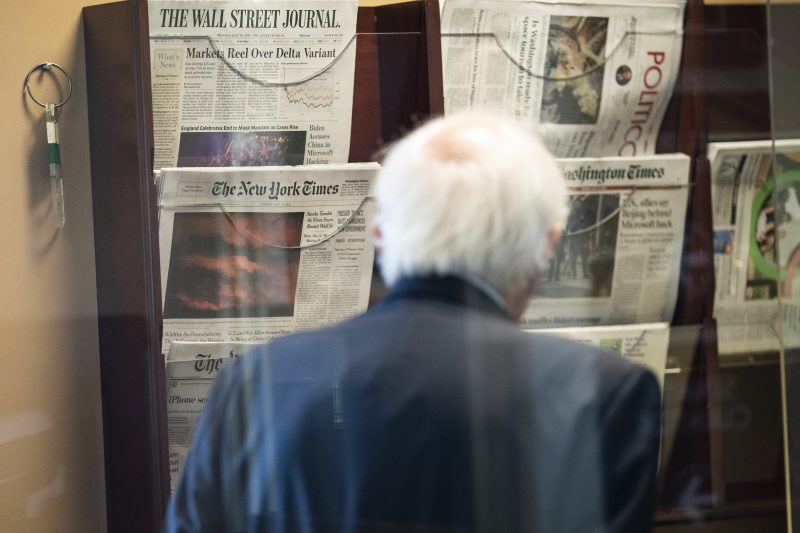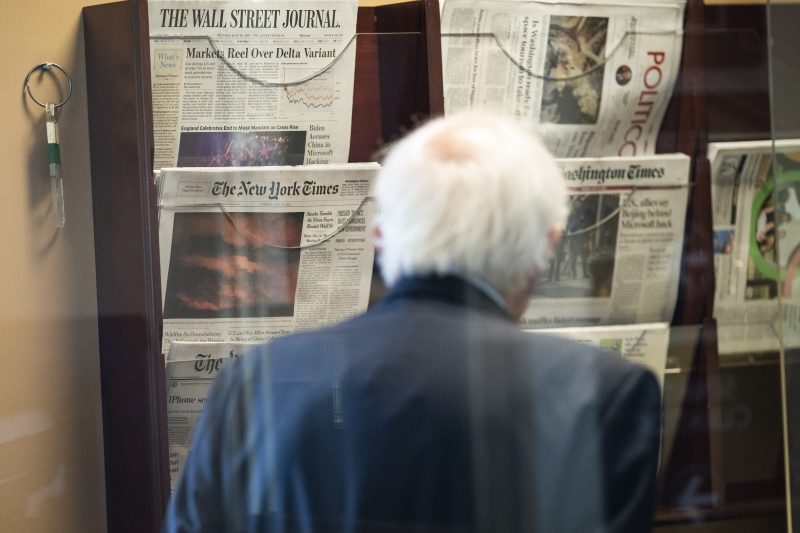
One week ago, President Biden gave his State of the Union address. It was well-received; his forceful arguments — many ad-libbed — were an effective way to rebut (though certainly not completely dispel) even good-faith concerns that he is frail physically or mentally. Polling conducted among those who watched the speech (18 percent more people than in 2023) determined that the response was largely positive.
As we reported at the time, though, State of the Union speeches often haven’t had much effect on presidential approval. On average since 1988, approval ratings ticked up about a half-point in the week after a speech, with any improvement gone within a month. And, sure enough: Biden’s approval rating is 0.3 percentage points higher than it was March 7, according to 538′s average of polls.
Perhaps that will change. Maybe the effects of the speech and Biden’s post-speech visits to swing states will push those numbers higher. But again, past presidents haven’t seen much improvement. The State of the Union address is a central moment in the political year — but one that simply fails to affect, much less engage, an enormous part of the population.
This question of engaging Americans is a central one for politicians. Biden’s administration has struggled to effectively convey what it presents as his successes to enough people to push his approval rating into net-positive territory; his campaign — young but existent — has not propelled him consistently above Trump in polls.
Many of Biden’s allies or supporters identify the mainstream media as a point of failure in this effort. Headlines or snippets of stories from The Washington Post or the New York Times are isolated and shared with recommendations for how the story should have been framed or written. Were it not for this sort of coverage, the argument goes, Biden would be faring far better.
I am undeniably a biased participant in this debate. But it seems irrefutable that this argument misunderstands how Americans receive information.
In December, The Post and our partners at the University of Maryland asked Americans to identify their main source of news. Only 3 percent of respondents said The Post. Eight percent said the Times. The two papers were the first source of information for 7 percent of independents and a staggering 1 percent of Republicans. Four times as many Republicans said their main source of news came from fringe-right outlets such as One America News or the Daily Wire as said their main source was the Times or The Post.
The category of responses that was most often identified by respondents was “other” — sources of news identified by respondents were outlets not on the list, ranging from small media sites to fundamentalist religious sites. The second-most-identified main source of news was Fox News. Three in 10 Republicans said the right-wing channel and its website were their go-to for news.
This remains the central issue for political actors, much less anyone else trying to reach out to the American public. There’s a deep, well-defended divide between two universes of information. The Post and other traditional outlets sit in one universe, the one that attempts to comport with objective reality. Outlets like One America and Fox News sit in the other universe, the one where adherence to a political worldview takes primacy.
I can’t speak on behalf of this paper, but it is safe to assume, given the numbers cited above, that The Post doesn’t know how to bridge that divide any more than Biden does. And Biden’s low approval ratings are much more a function of people who sit on the other side of the divide than they are of those who read our reporting.
Last April, YouGov asked Americans to indicate how much trust they had in television personalities. The person who had the highest rating among those presented — most of whom sat on the political right — was far-right commentator Dan Bongino. Four people besides Bongino were viewed as trustworthy by at least 7 in 10 Republicans: Tucker Carlson, Bret Baier, Jeanine Pirro and Maria Bartiromo. Sean Hannity and Laura Ingraham came in just under 70 percent.
How does Biden — or anyone else invested in reality — reach people who think Tucker Carlson is trustworthy?
A lot of Americans, of course, don’t pay attention to the news in the first place. Polling released by CNN in February indicated that 35 percent of respondents said they either only pay as much attention to the presidential campaign as necessary or actively avoid it. Only a quarter said they frequently seek out campaign news. Three in 10 Republicans said that compared with 2 in 10 Democrats.
You can see the argument that follows from that: Maybe more Democrats would pay attention if the media coverage were more explicitly positive for Biden! Perhaps, but that assumes that they already see and disapprove of the coverage. A more likely explanation is that Trump supporters report being more excited about their candidate’s nomination than Biden supporters are about theirs.
At the American Prospect, Ryan Cooper argued that Democrats need to create a media outlet that is explicitly partisan to get Democrats energized about the election. This seems redundant over the short term given that there will soon be a massive, 10-figure operation underway to promote Biden: his campaign.
Cooper points to evidence like polls collected by left-wing writer Kevin Drum showing that many Americans don’t know about Trump’s legal problems. Those polls — actually first reported by me in The Post — show that the vast majority of Biden supporters do know about the legal challenges Trump faces. It’s not clear how a party publication would fare better than the media that exists.
“What I’m envisioning is a fact-based publication with a liberal frame — some straightforward journalism, plus some formal party messaging, somewhat similar to the traditional split between reporting and opinion,” Cooper writes. No harm in that, certainly. It is broadly advantageous to have explicitly partisan news outlets because they are motivated to dig much deeper into the opposition than others might be. The problem is that the subsequent framing can obscure the truth, as when left-wing publications repeatedly claimed that the guy indicted on a charge of falsely accusing Biden of taking a bribe did so as a function of Russian intelligence.
The rejoinder here will be that the traditional media applies its own obscuring frames, which can be true! But there is a valuable difference, I think, between an outlet predicated on accuracy that occasionally presents a blurred picture and an outlet predicated on presenting a point of view that aims for accuracy.
It’s also the case — I again say while recognizing my bias on the subject — that the criticisms of the media are often cherry-picked or overwrought. There’s so much attention paid to the front pages of newspapers, something that has become largely irrelevant in recent decades. But there’s a cottage industry in picking nits off the Times in particular, from people who want the Times to perfectly reflect their political inclinations. Ironically, a new, explicitly Democratic publication probably wouldn’t have much effect on politics — given the awareness already shown in polling — but it might be more commercially successful given the market for such a presentation of the news.
There’s an element of these complaints that seems like a natural response to the moment. The Donald Trump era of politics has led traditional news outlets to use terms that are both negative and accurate when describing him and his allies: “lying,” or “anti-democratic” or “authoritarian.” That’s helped build an expectation, it seems from my perspective, that reporters should therefore share readers’ politics and frame. When that doesn’t happen, frustration emerges.
This is not why Biden is struggling against Trump. The effect of a story in The Post or a social media post from the Times is minimal even among our audiences, much less Americans overall. It feels productive for readers to try to steer our coverage in ways that are more politically useful (and, of course, always fair to point out explicit mistakes). But this is simply an example of exerting influence where you can; shifting the frame of a Post article doesn’t change Sean Hannity promoting baseless allegations without pause.
All of this sounds defensive, I’m sure. In part it is. But it is also the case that the framing of news articles or segments on cable news has far less reach than people imagine. Biden got up in prime time and spoke to 32 million people, and he couldn’t push his approval upward substantially. You think that a different headline on our front page will make more of a difference?

